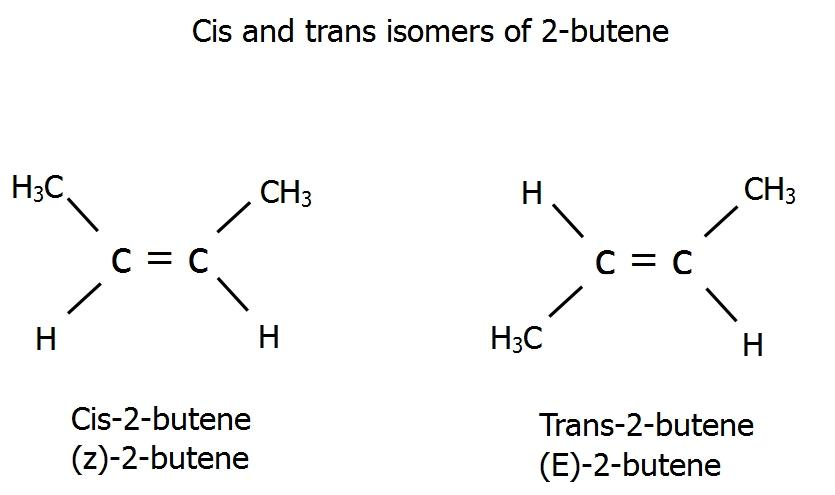
What are the cis and trans isomers of
Answer
432k+ views
1 likes
Hint:
Complete answer:
Cis-trans isomerism, also known as E-Z isomerism, is a term used in organic chemistry and a property shown by both organic and inorganic molecules. It is a type of isomerism falling under the category of stereoisomerism, where atoms have different spatial arrangement in three dimensional space. The prefixes “cis” and “trans” have latin roots, cis being translated to “this side of”, and trans being translated to “other side of”. In organic chemistry, cis isomers have functional groups on the same side of the carbon chain, while trans isomers have functional groups on the opposite sides of the carbon chain.
The diagram shown below has the pictorial representation of

It is clear that in
Note:
In principle, the cis and trans isomers of butene are conformational isomers, but theoretically, they can be interconverted by a simple rotation about the double bond. However, this rotation is not feasible, as the energy requirement of
Complete answer:
Cis-trans isomerism, also known as E-Z isomerism, is a term used in organic chemistry and a property shown by both organic and inorganic molecules. It is a type of isomerism falling under the category of stereoisomerism, where atoms have different spatial arrangement in three dimensional space. The prefixes “cis” and “trans” have latin roots, cis being translated to “this side of”, and trans being translated to “other side of”. In organic chemistry, cis isomers have functional groups on the same side of the carbon chain, while trans isomers have functional groups on the opposite sides of the carbon chain.
The diagram shown below has the pictorial representation of

It is clear that in
Note:
In principle, the cis and trans isomers of butene are conformational isomers, but theoretically, they can be interconverted by a simple rotation about the double bond. However, this rotation is not feasible, as the energy requirement of
Recently Updated Pages
Master Class 9 General Knowledge: Engaging Questions & Answers for Success

Master Class 9 English: Engaging Questions & Answers for Success

Master Class 9 Science: Engaging Questions & Answers for Success

Master Class 9 Social Science: Engaging Questions & Answers for Success

Master Class 9 Maths: Engaging Questions & Answers for Success

Class 9 Question and Answer - Your Ultimate Solutions Guide

Trending doubts
Give 10 examples of unisexual and bisexual flowers

Draw a labelled sketch of the human eye class 12 physics CBSE

Differentiate between homogeneous and heterogeneous class 12 chemistry CBSE

Differentiate between insitu conservation and exsitu class 12 biology CBSE

What are the major means of transport Explain each class 12 social science CBSE

Draw a diagram of a flower and name the parts class 12 biology ICSE




